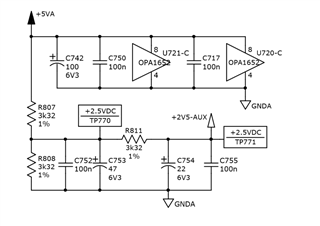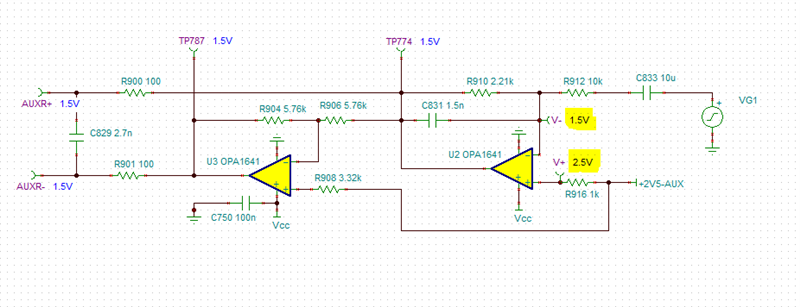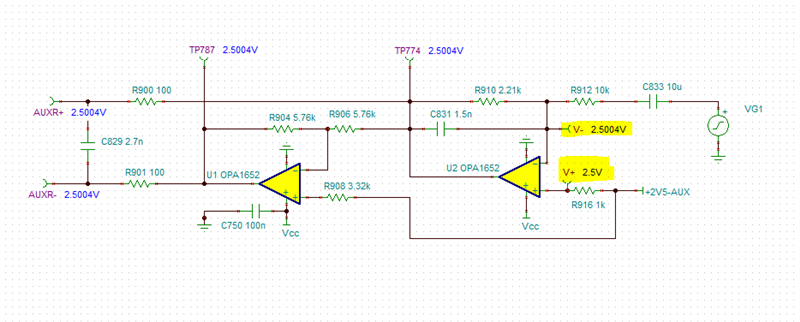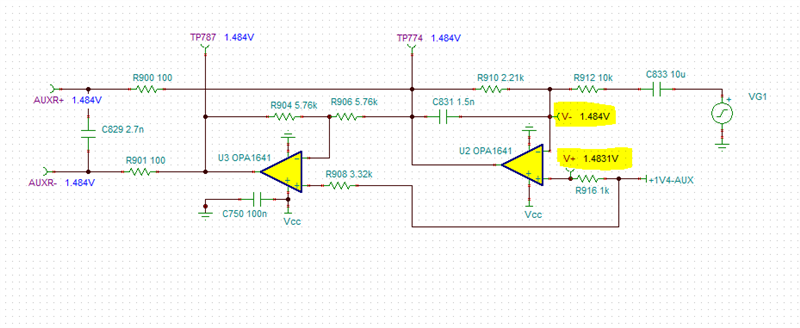Other Parts Discussed in Thread: OPA1652, OPA1688
Dear,
Is there a recommended application for OPA1642 working in +5V single power supply, is there any risk? It seems below application not working properly, it on some units get terrible noisy output, also worse SNR and THD.

Thanks!








